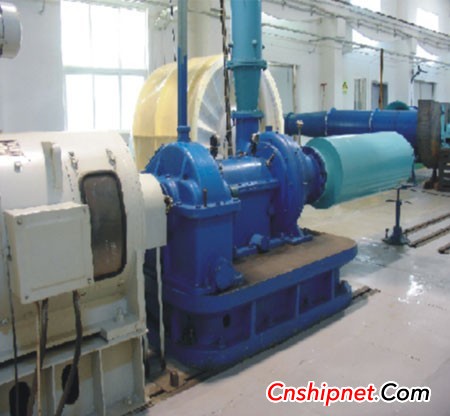Recently, Samsung Techwin, a subsidiary of South Korea's Samsung Heavy Industries, successfully developed a compressor for the use of a LNG carrier and obtained technical quality certification from the Norwegian Classification Society (DNV).
The newly developed LNG marine compressor unit system developed by Samsung Techwin will be applied to the following two aspects: First, the natural gas that is naturally vaporized in the storage tank of the LNG ship during the voyage will be collected and sent to the ship's machine for fuel use; Naturally gasified natural gas is recompressed and sent to the LNG receiving station on land for transport through the pipeline for consumption. The company plans to put it into commercial production and sales in the next step.
In the past five years, the average annual market size of LNG ship compressors in the world is close to 700 million US dollars, and the price of each product ranges from 2 million to 4 million US dollars. Currently in the international market, the production and sales of LNG marine compressors are mainly monopolized by a few companies in Europe and the United States. Since the LNG ships built by Korean shipbuilding companies account for 70% to 80% of the international shipbuilding market, South Korea's demand accounts for about half of the international market share. However, for a long time, South Korea needs to import LNG ship compressors from abroad to meet the matching needs, which is costly. Now, Samsung Techwin has made plans to supply compressors for LNG ships built by Samsung Heavy Industries since 2015. After that, it will provide supporting services for LNG ships built by Hyundai Heavy Industries and Daewoo Shipbuilding. With the expansion of production and the overall improvement of the technical level, Samsung Techwin plans to replace imported products with self-produced compressors and export to foreign markets.
It is reported that the demand for LNG in the international market is constantly increasing rapidly, and the LNG carrier fleet is also expanding its capacity. China, South Korea and Japan shipbuilding companies are improving the construction capacity and technical level of LNG ships, LNG ship storage tanks, compressors, natural regasification equipment, and regasification natural gas recovery and reuse equipment. The R&D and production of equipment has become an area of ​​competition among Chinese, Japanese and Korean companies.
Aluminum Die Casting Communication Equipment Parts are a metal forming process in which molten aluminum metal is put under pressure and injected into a die.
Aluminum weighs 1/3 of a comparable steel part. The Aluminum Parts would cost less to ship due to the weight and spend less expense than other manufacturing processes.
Aluminum Die Casting Communication Equipment Parts are lightweight alloys that have good corrosion resistance, mechanical properties, high thermal and electrical conductivity and strength at high temperatures. Aluminum alloys possess high dimensional stability for complex shapes and thin walls.



Aluminum Die Casting Communication Equipment Parts are efficient and economical and offers a wide range of durable shapes and components. Little or no machining is required after a part is die casted, because the process provides very close tolerances for even complex shapes. Aluminum Die Castings can also be easily plated or finished. Aluminum Die Casting Communication Equipment Parts are dimensionally stable and heat resistant.Aluminum Die Casting Communication Equipment Parts
Aluminum Die Casting of Communication Equipment Parts, Aluminum Die Casting, Casting parts, Aluminum Casting of Communication Equipment Parts
NINGBO ZHENHAI BOLANG METAL PRODUCT FACTORY , http://www.bldiecasting.com




![<?echo $_SERVER['SERVER_NAME'];?>](/template/twentyseventeen/skin/images/header.jpg)